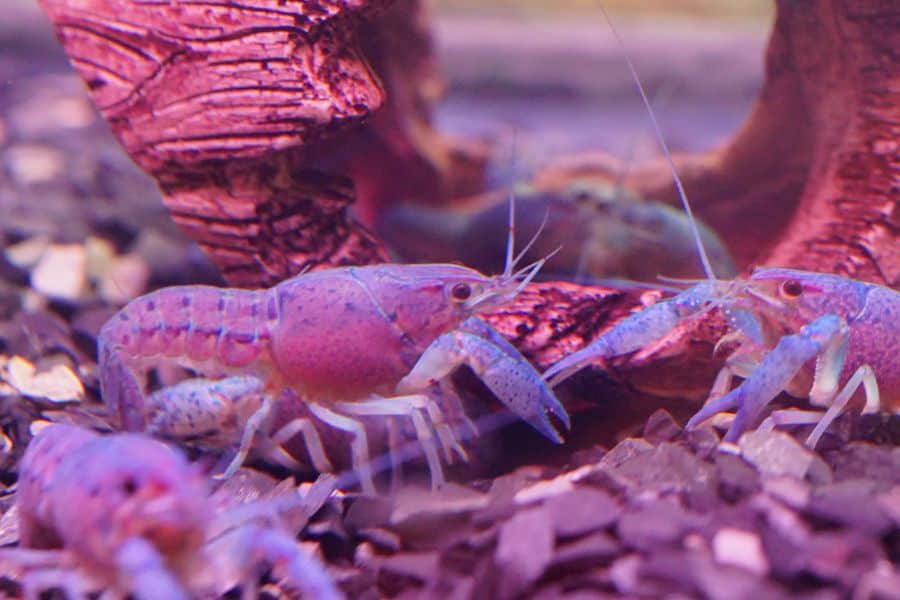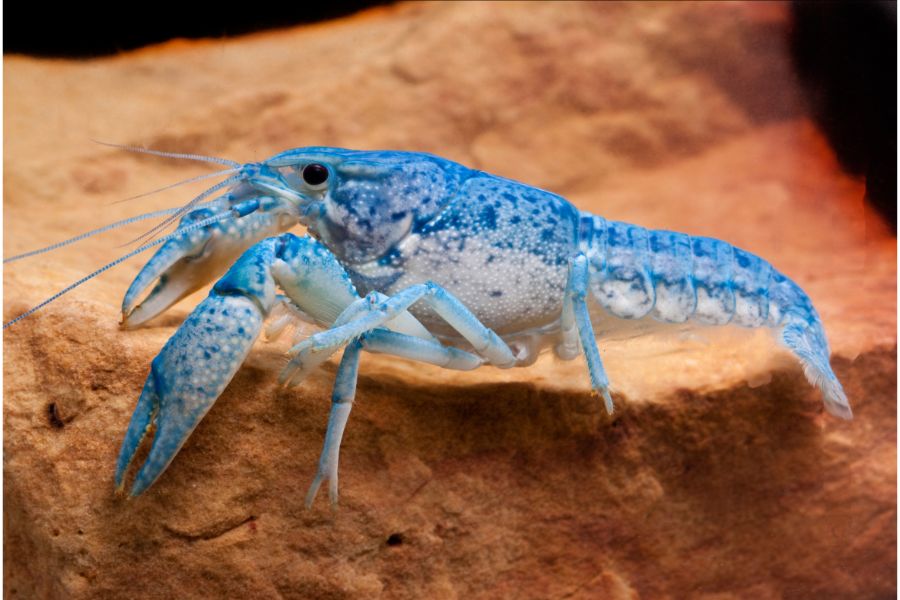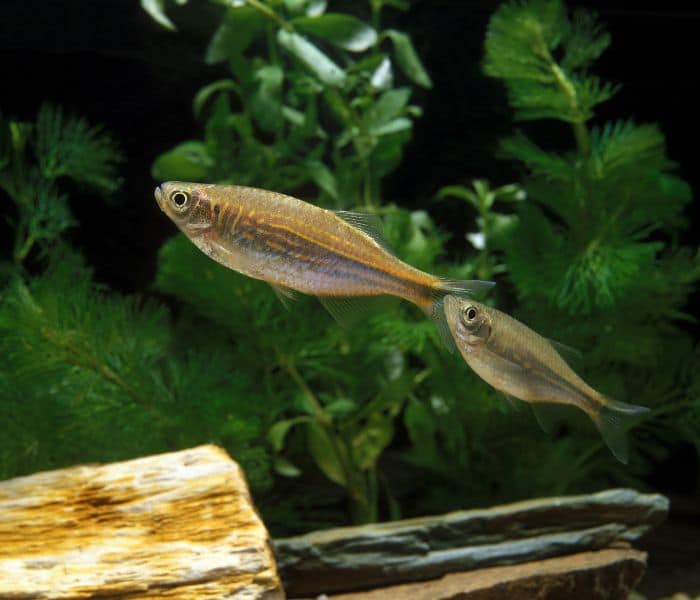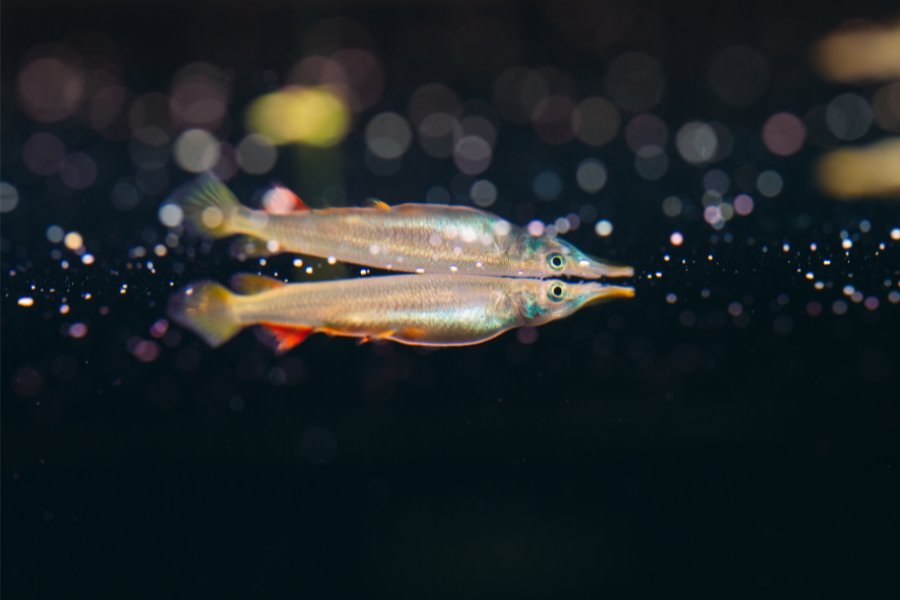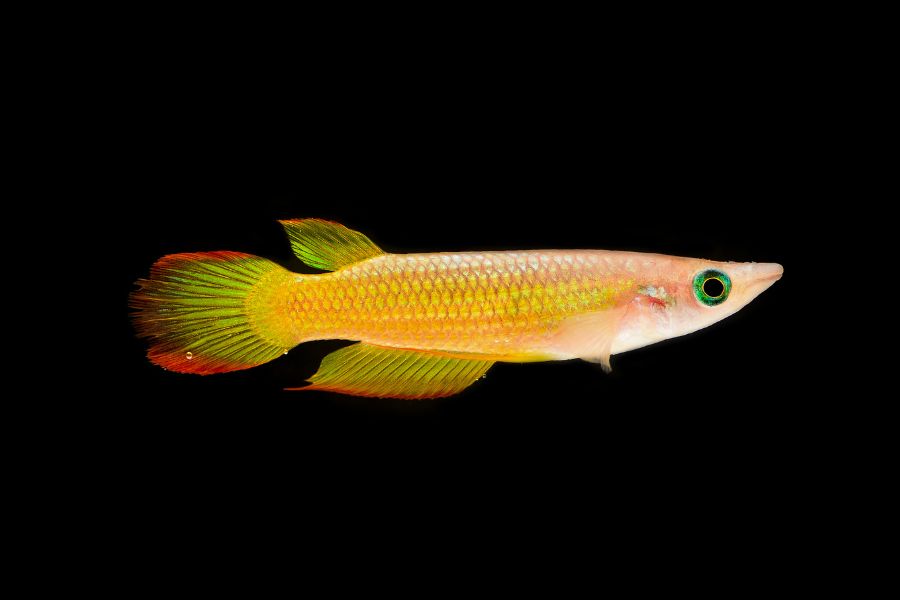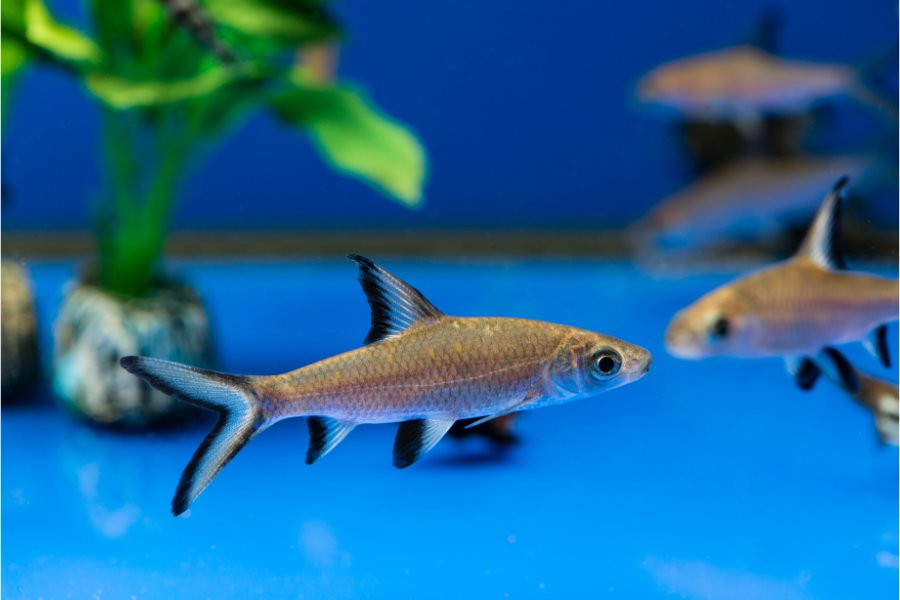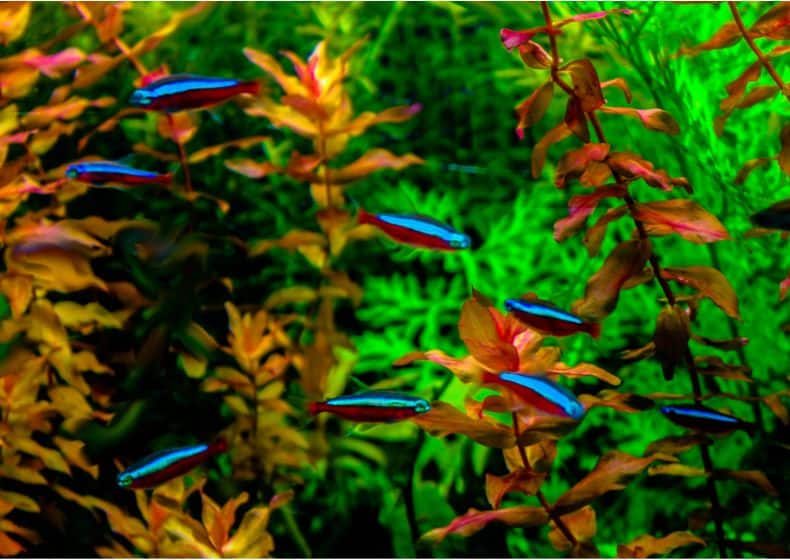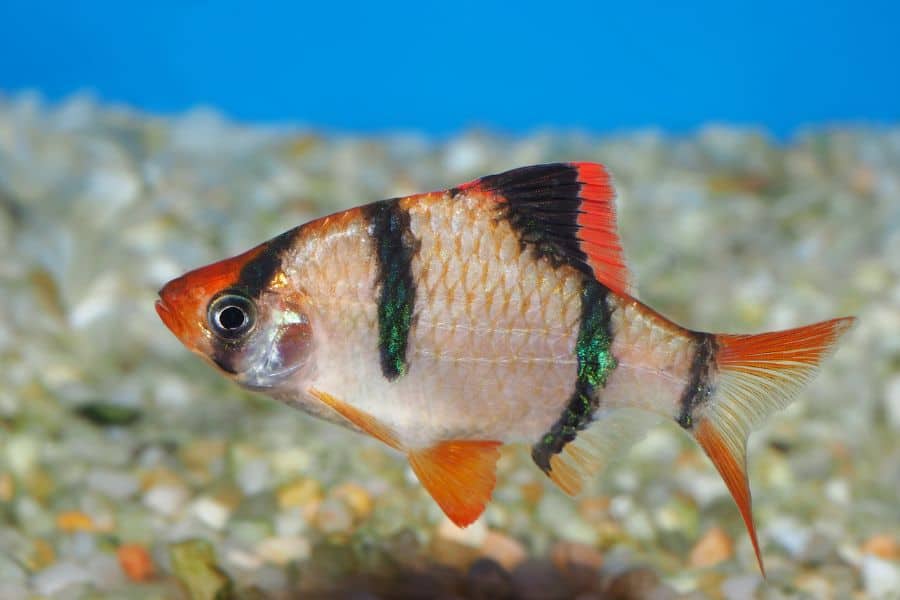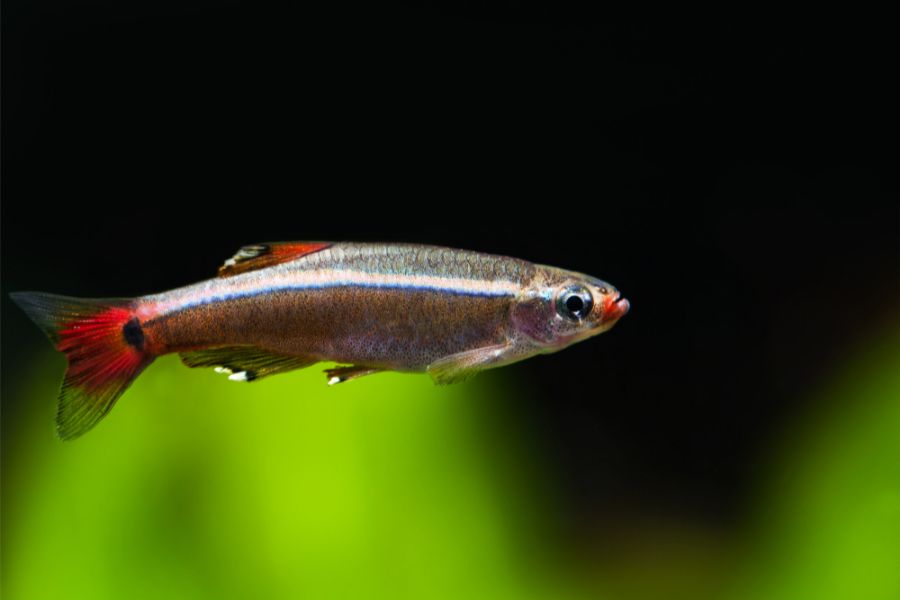In the realm of gastronomy, Crayfish are a delicacy. But in our beloved aquarium hobby, Crayfish is a prized possession and a precious pet.
Yes, Crayfish are the 10-legged invertebrates we see wandering around the tank, especially in the substrate. Most of the time, aquarists keep them alone in the tank. However, this should not be the case since they can coexist with other animals, especially fish.
In this article, we will feature the best tank mates for Crayfish together with their desired traits that make them compatible.
Desired Traits for A Crayfish Tank Mate
Fish and crayfish are not taxonomically related. Although they bear “fish” in their name, crayfish are not fish. They are crustaceans and are close relatives of crabs and shrimps.
Since they come from different taxonomic groups, fish and crayfish have characteristics unique to them. But it doesn’t mean they cannot coexist in a single tank. They do, and for a fish to become a crayfish tank mate, it must have the following traits:
Non-Aggressive
Crayfish are aggressive. Their aggression can be triggered when threatened, during mating season, or competing for resources (like shelter and food).
Their primary weapon in attacking is a pair of large claws called cheliped. When they become aggressive, Crayfish raise and open their cheliped, charge forward, and clip their target tight.
For a tank mate to coexist with Crayfish, they must be non-aggressive. They will back off whenever Crayfish aggression is in full swing.
However, if a tank mate is also aggressive, expect a head-on fight where one is guaranteed to suffer (worst if both). It is why Oscars and Cichlids don’t match with Crayfish. If you try having one of them in a tank, expect your Crayfish to be gone in no time.
Non-Bottom Dweller
Crayfish are incapable of vertical swimming. Although they can crawl to elevated structures (like plants and driftwood), they usually stay at the bottom, and the entire substrate of your tank is their territory.
With this in mind and to keep them away from Crayfish aggression, their tank mate should be a mid-water or surface swimmer, not a bottom dweller like most algae eaters.
Fast-Swimmers
When threatened (especially by large predators), Crayfish can burst into a turbo-charged swim. But other than that, Crayfish are slow-moving aquarium pets.
They passively wander in the substrate by crawling slowly, but occasionally attack whenever they encounter a potential threat.
When this happens, their tank mate should swim fast and evade before being caught by the Crayfish.
Related Size
The maximum size of Crayfish will depend on the species.
The Dwarf Blue Crayfish (Cambarellus diminitus) is one of the smallest aquarium Crayfish reaching only a maximum size of 5 cm (2 in), while the Australian Red Claw Crayfish (Cherax quadricarinatus) is one of the largest at 20 cm (8 in).
The key here is to have a tank mate similar in size (slightly smaller the better) to the Crayfish you have.
Remember that your Crayfish undergo periodic molting. When they grow, they shed out their old shell and it takes time before they are covered with a new and larger shell. During molting, Crayfish are prone, and imagine how easily large fish can munch in their soft exposed bodies.
Similar Water Parameters
Of the over 600 species of Crayfish worldwide, only less than a hundred are being traded in the aquarium industry. Most of these Crayfish species originate from the southeastern states of the US and thrive in temperate water conditions.
For a tank mate to coexist and survive, it must thrive in similar water conditions to Crayfish, as listed below:
| Parameter | Range |
| Temperature | 18 to 25 C (64 to 77 F) |
| pH | 7 to 8 |
| Hardness | 8 to 12 dGH |
| Ammonia | 0 ppt |
| Nitrite | 0.25 ppm |
| Nitrate | 5 to 10 ppm |
| Water flow | Low to moderate |
| Lighting | Low to moderate |
The Best Tank Mates for Crayfish: A Quick Glance
| Name | Compatibility Checklist | ||||
| Non – aggressive | Non – bottom dweller | Fast swimmer | Size | Water parameters | |
| Giant Danios | ✓ | ✓ | ✓ | ✓ | ✓ |
| Wrestling Halfbeak | ✓ | ✓ | ✓ | ✓ | ✓ |
| Dwarf Mosquitofish | ✓ | ✓ | ✓ | ✓ | ✓ |
| African Butterflyfish | ✓ | ✓ | ✓ | ✓ | ✓ |
| Brown Pencilfish | ✓ | ✓
(x if sick) |
✓ | ✓ | ✓ |
| Golden Wonder Killifish | ✓
(x for small fish) |
✓
(x if hungry) |
✓ | ✓ | ✓ |
| Bala Shark | ✓ | ✓ | ✓ | x | ✓ |
| Neon Tetra | ✓ | x | ✓ | ✓ | ✓ |
| Silver Dollar | ✓ | x | ✓ | ✓ | ✓ |
| Forktail Rainbowfish | ✓
(x for trespassers) |
✓ | ✓ | ✓ | ✓ |
| Tiger Barb | x | ✓
(x if sleep) |
✓ | ✓ | ✓ |
| Zebra Danios | x
(✓ if in groups) |
✓ | ✓ | x | ✓ |
| White Cloud Mountain Minnow | ✓ | ✓
(x if sleep) |
✓ | x | ✓ |
The Best Tank Mates for Crayfish: Reviewed
Giant Danios
The Giant Danios (Devario aequipinnatus) is the largest of the minnow family of fish. But do not be confused with the word “giant” as they only grow up to 15 cm (6 in).
Aside from having a similar size to most species of Crayfish, they are non-aggressive, mid-swimmers and they seldom go to the substrate territories of Crayfish.
Another misleading trait of Giant Danios is their origins. While they are natives of India and Sri Lanka, their water parameters are within the range of those of Crayfish.
All these traits make the Giant Danios a perfect tank mate for your Crayfish.
Wrestling Halfbeak
The Wrestling Halfbeak (Dermogenys pusilla) is one of the perfect tank mates for Crayfish scoring 5/5 on the compatibility checklist.
They are peaceful, fast swimmers, and their water parameters are closely similar to those of Crayfish. Aside from these traits, what makes the Wrestling Halfbeak perfect for Crayfish is they occupy a different zone in the tank.
They are surface swimmers and the only way they can be reached by your Crayfish is through the vertical growth of aquarium plants. So, be mindful of trimming your plants.
Fun question: Why are they called Wrestling Halfbeaks?
Although generally harmless to your Crayfish and other fish in the tank, Wrestling Halfbeaks are aggressive towards their species. Rivalry is common among males where they can wrestle and fight by locking their uneven jaws until one is damaged or detached.
Dwarf Mosquitofish
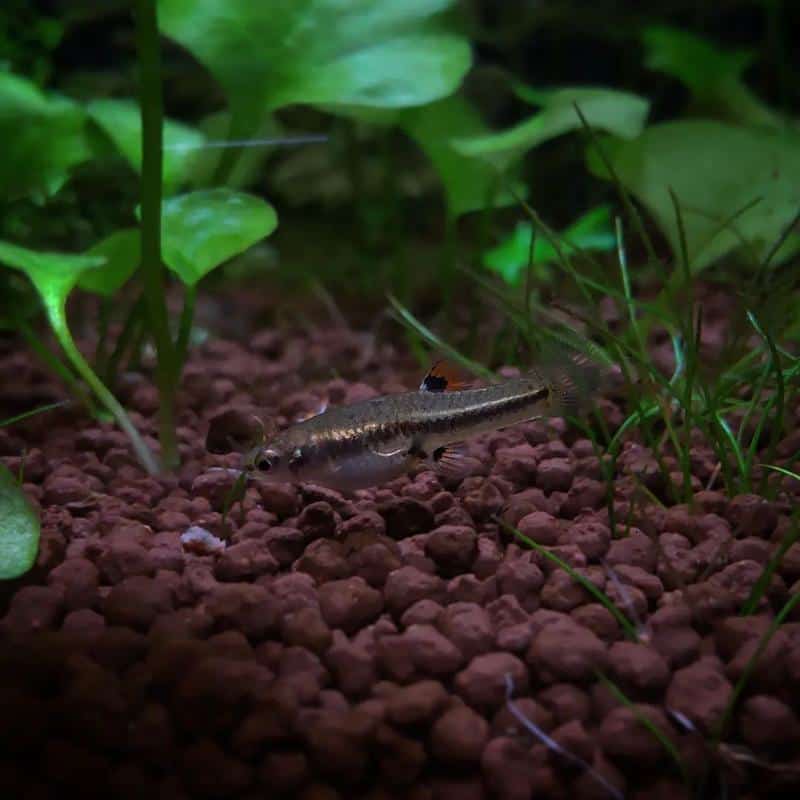
The Dwarf Mosquitofish (Heterandria formosa) is another perfect tank mate for your Crayfish with a 5/5 compatibility score.
Spending most of the time at the surface, their surface swimming trait is their greatest asset to being a perfect tank mate and away from the claws of your Crayfish.
What’s best with the Dwarf Mosquitofish is they don’t just serve as a Crayfish tank mate. These 4 to 7 cm (1.6 to 2.8 in) long fish are also great at controlling the mosquito population.
Fun fact: Dwarf Mosquitofish don’t eat mosquitoes. Instead, what they eat are freshly hatched mosquito larvae.
African Butterflyfish
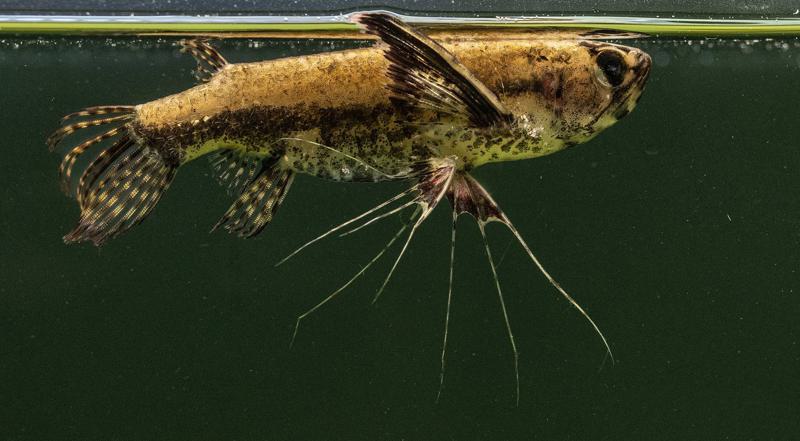
The African Butterflyfish (Pantodon bucholzi) is the ultimate representative of a fish that is the complete opposite of being aggressive. They are shy and peaceful throughout their aquarium life, except during courtship and mating.
Despite being mid-sized growing up to 15 cm (6 in) long, they can sometimes be hard to find in the aquarium. You need to focus your sight on searching for them since their body color and pattern blend and camouflage with the surroundings.
Brown Pencilfish
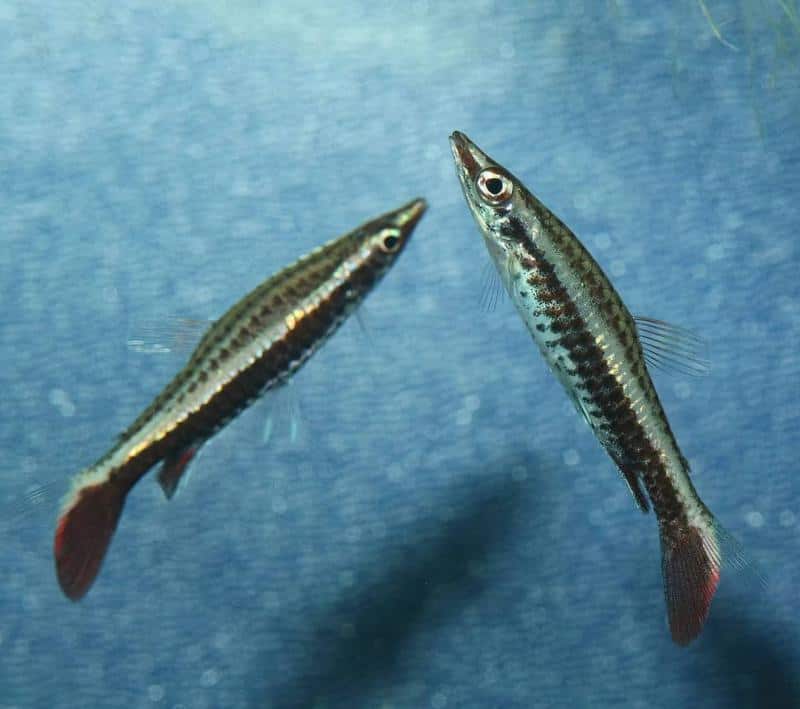
If you have a Dwarf Blue Crayfish or any small-sized Crayfish kept in a 10-gallon tank, consider adding a Brown Pencilfish (Noannostomus eques) as their tank mate.
Brown Pencilfish are small at 2.5 cm (1 in) maximum length. They are also known as Diptail Pencilfish due to their unique surface swimming behavior of making a nose-up position, which elevates their head and dips down their tail.
This fish is supposedly a perfect tank mate for Crayfish. However, if this fish gets sick, they go down to the substrate and reduce their swimming agility. Given their tiny size, they are prone to Crayfish predation when they are unhealthy.
Golden Wonder Killifish
A 20-gallon tank is one of the most commonly used aquarium sizes for keeping Crayfish. If you have this setup, consider adding a Golden Wonder Killifish (Aplocheilus lineatus).
Since they can grow to 10 cm (4 in) long, the Golden Wonder Killifish is the perfect tank mate for a mid-sized Crayfish, like the Vanilla Crayfish (Procambarus clarkii). They are peaceful and easy to take care of.
Two things to remember in keeping the Golden Wonder Killifish. First, you need to provide a surface lid for your tank since they love to stay near the surface and can jump out of the water. Second, you need to feed them well since they will scavenge the substrate if they go hungry and may come in contact with your Crayfish.
Bala Shark
Bala Sharks (Balantiocheilos melanopterus) are great tank mates for your large-sized crayfish kept in a large-sized tank (like a 100-gallon aquarium). These two species create a harmonious contrast since Crayfish are passively wandering in the substrate while Bala Sharks are actively swimming in midwater.
While they can grow up to 35 cm (14 in) long when fully mature, the trick is to simultaneously stock juvenile Bala Sharks and Crayfish of a similar size. In most pet shops, juvenile Bala Sharks are sold in sizes ranging from 8 to 10 cm (3 to 4 in).
Neon Tetra
Consider the Neon Tetra (Paracheirodon innesi) if you’re looking for a Crayfish tank mate that groups into a school. They are small-sized fish at 4 cm (1.5 in) maximum length and they are ideally kept in groups.
Two things to be aware of in keeping Neon Tetra. First, they are prone to diseases. Second, their schooling behavior allows them to explore all parts of the tank, including the substrate layer where they can come face-to-face with Crayfish. The good thing is they are not aggressive and they swim fast, easily avoiding any approaching Crayfish.
Silver Dollar
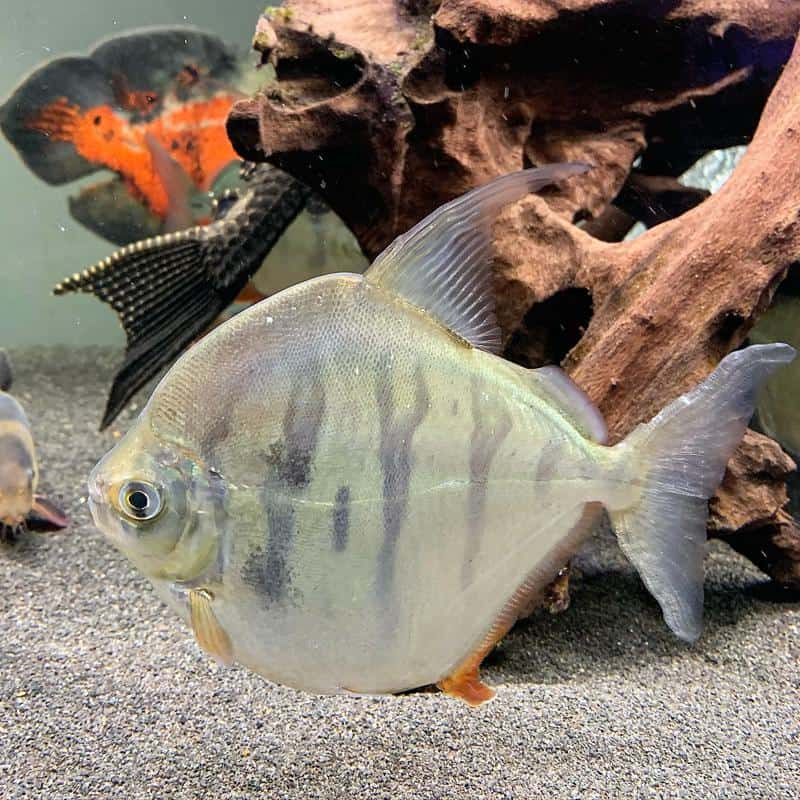
If you don’t know anything about Silver Dollar (Metynnis argenteus), you may consider them incompatible with Crayfish since they look like a Piranha.
The fact is Silver Dollars are closely related to Piranhas. They can grow up to 15 cm (6 in) long, actively swim in school, and roam around your tank, including the substrate.
Although they may occasionally come in contact with your Crayfish, Silver Dollar will not harm them since they are almost exclusively vegetarian.
Tiger Barb
The Tiger Barb (Puntigrus tetrazona) is one of the best tank mates for your Blue Crayfish (Procambarus alleni). They share similar water parameters and they only vary slightly in size.
The downside with Tiger Barb is they become aggressive when in solitary, but it can be curbed when they are in groups where their aggression brought by boredom is diverted to swimming fast in their school.
Another thing to note with Tiger Barb is that when they sleep and rest, they usually go to the bottom motionless and this is where they are prone to Crayfish predation.
Zebra Danios
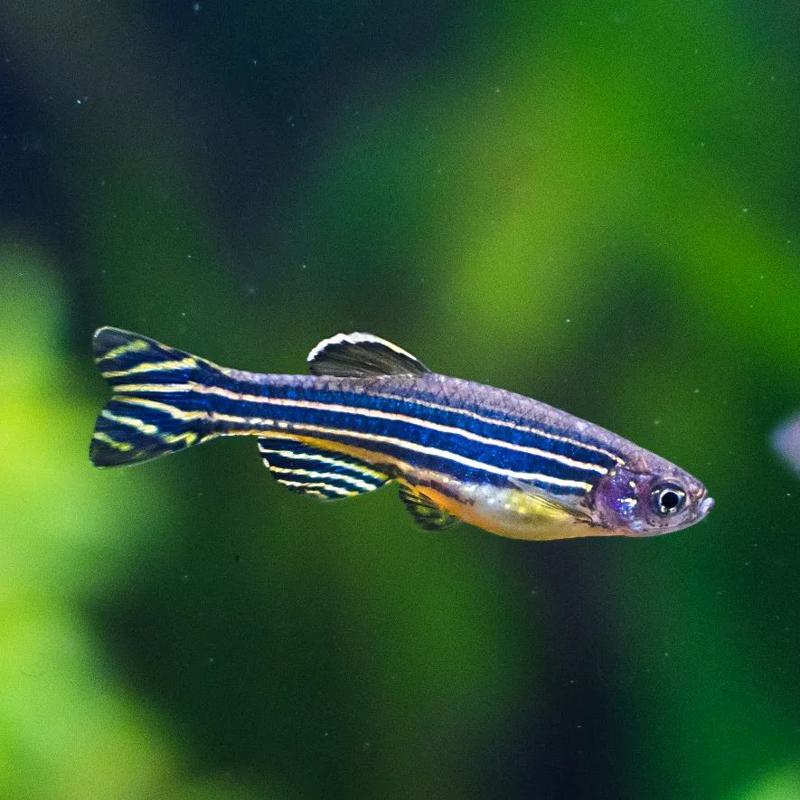
If only Zebra Danios (Danio rerio) are large, then they can become the perfect tank mate for your Crayfish. Nevertheless, this 5 cm (2 in) long fish is still compatible with your Crayfish since they mostly thrive in the upper levels of your tank.
Just be aware that Zebra Danios have a unique preference for cold waters. In the event your aquarium waters warm up, they go to the colder waters near the substrate where your Crayfish are found. Also, you need to keep Zebra Danios in groups since they become aggressive when their numbers are low.
White Cloud Mountain Minnow
The White Cloud Mountain Minnow (Tanichthys albonubes) is a surface to mid-swimming fish that loves to swim in groups.
They are relatively small (4 cm or 1.5 in) which is not a good compatibility trait for Crayfish. The reason for this is when they get sick and become unhealthy, they tend to stay near the substrate where their tiny size can easily be captured by the large claws of your Crayfish.
Also Read: What Do Crayfish Eat?
FAQs
Can Crayfish Live in A Community Tank?
It depends on what type of fish is in a community tank. If all the fish have traits compatible with Crayfish, then you can expect a harmonious coexistence. However, if one trait does not favor the other, then expect that either your fish or your Crayfish will suffer.
Considering the molting phase of Crayfish, you also have to provide them with ample hiding spaces. It becomes their temporary den and prevents fish (even those that are not aggressive) from becoming interested to nip and bite on their soft and exposed bodies.
Can I Keep Crayfish with Shrimp?
Since both wander out in the substrate, Crayfish and Shrimps share the same habitat. Majority of the time, they come face to face with each other, and it is expected that your Crayfish will dominate over your Shrimp. And in the case of your Crayfish dominating your Shrimp, we don’t just mean bullying and occupying most of the space, but your Shrimp may also end up as a gastronomic feast for Crayfish.
Can You Put 2 Crayfish Together?
It depends on the size of the tank. The recommended tank size for one Crayfish is 20 gallons, but this will again depend on the size of the species you choose. The bigger the Crayfish species size, the bigger the tank required.
So, if you plan to place several Crayfish in a single tank, make sure it is pretty large with plenty of space to roam around (like more than 100 gallons capacity).
The reason for this is that Crayfish will fight between themselves to the death if they compete for limited space, and you don’t want that to happen.
Final Words
You may notice by this time that our list of the best tank mates for Crayfish is dominated by freshwater aquarium fish. The reason for this is they can evade whenever Crayfish aggression is in full swing.
And now that you know their best tank mates, it is time to also take care of your Crayfish, especially since they periodically undergo molting wherein they are highly exposed during that time.
